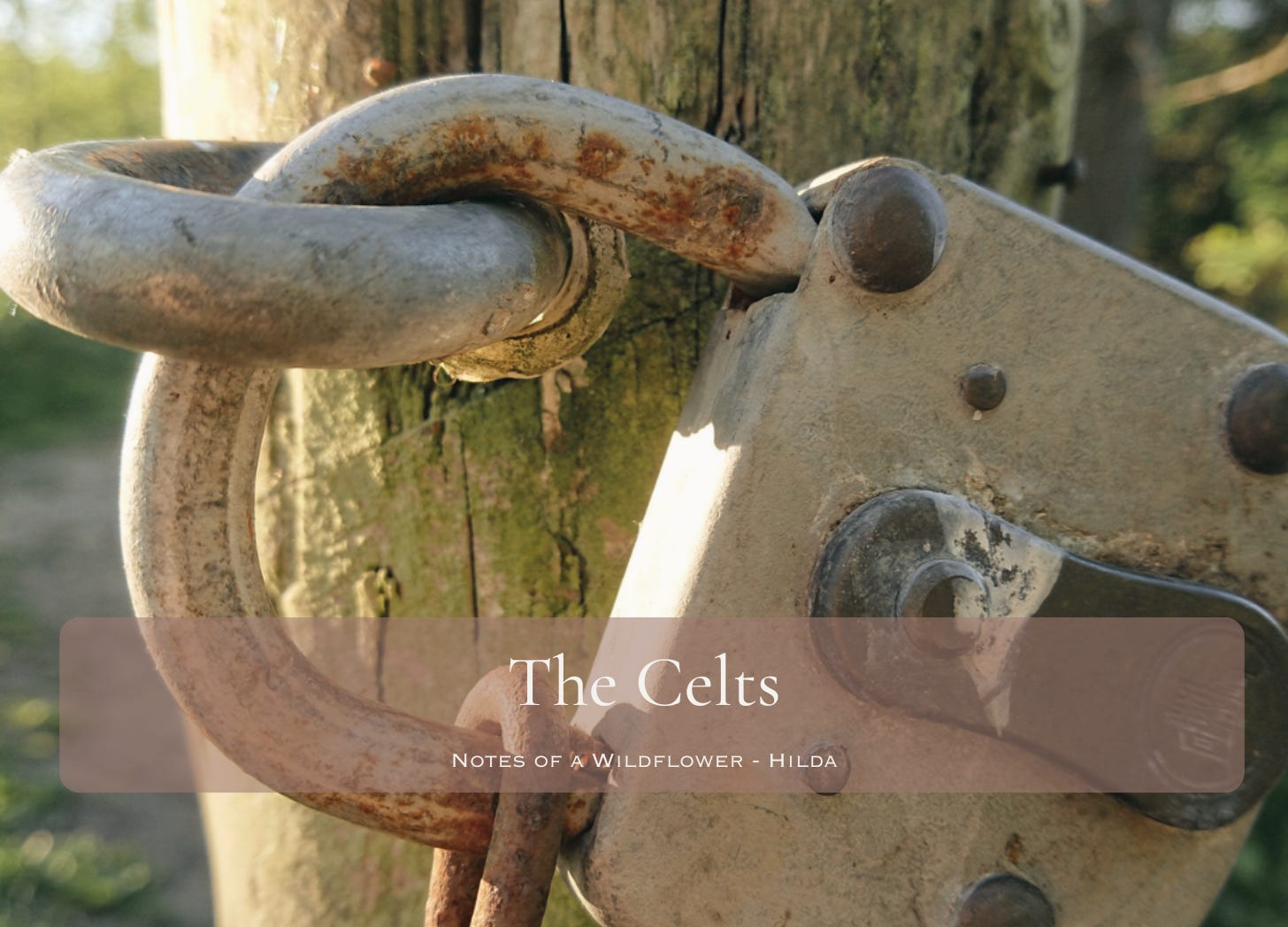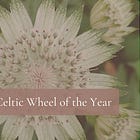One of the topics I love writing about in my Notes of a Wildflower is the idea of living more in tune with the seasons. Following the Celtic Wheel of the Year, with its eight seasonal festivals, provides a comforting rhythm for me. In this notes, I’ll share more about the Celts themselves.
How can you write about the Celtic Wheel of the Year without diving into the history of the Celts? Because who were these Celts, really? Think of it as a bit of background or context for understanding the Celtic Wheel of the Year.
You can find the introduction to the Celtic Wheel of the Year here:
It’s actually quite remarkable that the Celtic Wheel of the Year is still known today and serves as a guide for many who seek to live more in tune with the seasons. After all, everything we know about the Celts comes from the Greeks and Romans, who lived in the same period, were much more organized, and wrote things down.
The Celts were a people—or rather, several distinct tribes and groups—who spoke Celtic languages and inhabited large parts of Europe. What united them was their shared culture. There was no central king or emperor as there was with the Greeks and Romans. The Romans referred to them as Gauls.
Because the Celts weren’t highly organized, they were also easier targets for the Romans. In the first centuries of our era, the Celts were gradually pushed back to what is now Ireland and Scotland, and with that, much of their language and culture disappeared.
The Celts lived in deep connection with nature. The Celtic “faith” could be described as a nature-based spirituality. The cycles of nature, wonder, mysticism, and the rituals that accompanied them were central to their culture. According to Roman and Greek writings, the Celts honored around 400 gods and goddesses. They also believed in magical beings such as elves, fairies, and mythical creatures. And there were witches and druids (a kind of priestly figure).
They also held many trees as sacred. Trees were seen as gateways between the world of the living and the dead. The oak—considered sacred—and mistletoe were the most important, but other trees also had symbolic meanings and were honored during festivals on the Celtic Wheel of the Year. For instance, the hawthorn tree plays a central role during the celebration of Beltane.
To the Celts, everything was interconnected—stars, land, weather, animals, people. The boundary between life and death was thin. You can see this, for example, in the celebration of Samhain. The four elements—earth, water, fire, and air—played a major role, as did the cycles of the sun and moon. A month lasted exactly one lunar cycle.
That the Celts also understood the solar cycle is reflected in Stonehenge, which is believed to have been (partly) constructed by them. There are differing opinions about its exact function. However, the horseshoe shape and the vertical stones placed in the openings are precisely aligned with the sunrise on the days of the solstices.
It’s easy to imagine that their knowledge of these continuous cycles, together with their connection to nature, laid the foundation for what we now know as the Celtic Wheel of the Year.
P.S. I’m participating in
challenge to write 12 chapters this year, culminating in an ebook. Consider this the Chapter for May! 😊








This is really interesting and a good grounding in the history. I’ve always felt really drawn to the Celts and the way they mark the seasons so perhaps I am descended from them. 🤷🏼♀️